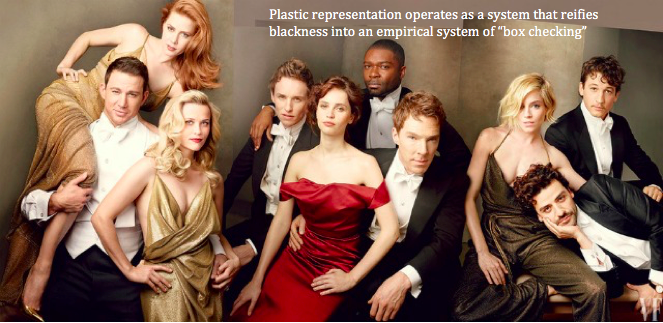Plastic Representation
In “In the Time of Plastic Representation,” Kristen J. Warner talks about the complex issue of adequate representation in film and TV. I chose the quote, “Plastic representation operates as a system that reifies blackness into an empirical system of ‘box checking’,” (Warner, 36). In this piece, she argues that though there are African American characters depicted in popular TV shows and movies, their roles can tend to be “box checks” rather than representations of content that relate to the experience of being a person of color in America. In other words, producers and casting agents think that just because they cast a person of color, the movie or show is now inclusive and not racist. This is not the case. Warner argues that roles need to be written that are focused on the black experience in 2018 America, rather than for the sidekick or character that may as well be white but was cast as an African American person. She also talks about how in the entertainment industry, there is not a lot of African American representation “below the line,” meaning the writers themselves, which contributes to the problem. I chose this photo of a Vanity Fair cover in 2015 that was meant to show the “stars of the year” or something along those lines. There is only one African American actor in the image out of ten, meaning the cover that is supposed to represent the best in Hollywood is 90% white. To me, the cover seems like a “box check,” and an inadequate representation of the diverse population of talent in Hollywood.
